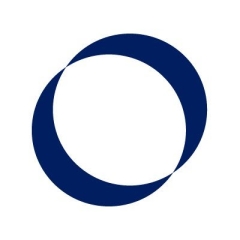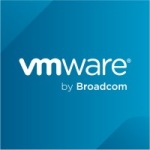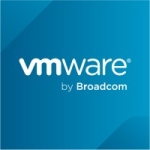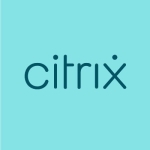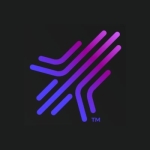What is our primary use case?
It is a method of providing a user with access to centralized resources in the form of either a full desktop session or a hosted application, whether it is Windows or Linux.
How has it helped my organization?
Horizon is known for its simplicity, security and flexibility in its deployment. It allows for simplified management, advanced user configuration and application deployment, all at speed and at scale. Horizon 8 improves on all of these, as most things can be automated by using either Powershell or REST api, and instant cloning is still the fastest way of creating virtual desktops, especially at scale.
Users can now access resources in a safe and simple way, using the same form of authentication as our other resources. They now have access to high performance desktops in the data centre or public cloud, by using hardware graphics acceleration in the servers hosting the VDI desktop solution. Data now stays securily in the data centre and users have incredibly fast access to it, since the desktops now live right next to that data.
The user can now use any endpoint they have available, since all they need is an HTML5 compatible browser or Horizon Client for their specific OS to be able to access the solution.
What is most valuable?
The most valuable feature of this solution is the ability to provide secure remote access to resources.
What needs improvement?
A simple way to load-balance components like the Connection Servers, Unified Access Gateways, App Volumes managers and Recording servers.
Since Omnissa Horizon lacks a load-balancing component, you must always use a third-party solution to be able to provide high availability for these components.
I would like to see simple load-balancing for smaller environments that do not have access to large enterprise solutions like F5 or AVI; components should be able to be made redundant or high available in a simple way.
Perhaps limited to only two components; if more are required, a paid load balancing solution can be used.
For how long have I used the solution?
I have been working with Omnissa Horizon for approximately fifteen years.
The first one I built was version four.
We are working with version eight, and our customers run version seven and some are already on version eight.
Version seven is already out of support.
The most recent version is 8.16, but they no longer use that numbering; it is now 2506. The new numbering reflects the month and year of release.
What do I think about the stability of the solution?
The stability of Omnissa Horizon is incredible for both Horizon version seven and version eight.
The only reason the basic component connection server failed was that there was something broken underneath, either storage, compute or antimalware solutions. Horizon itself rarely has any issues.
What do I think about the scalability of the solution?
At present, Omnissa Horizon scales up to 250,000 concurrent sessions.
In my opinion, Omnissa Horizon is a very scalable product. The most prominent companies in the world use it. Some require it to scale to that level, which is why the product is capable of doing so.
How are customer service and support?
I would rate the technical support a four out of five. Since the breakup with Broadcom, support staff has ofcourse decreased, but the focus has increased. There are now only a few products that support actually has to know, which helps in the focus. Responses have been fast and escalating things to the right level seems to be a lot speedier than before.
At this moment, the level of support is mature and still growing.
How would you rate customer service and support?
Which solution did I use previously and why did I switch?
I have had experience with Microsoft and Citrix. The switch was made due to the integration capabilities of Horizon with VMware vSphere. This combination is still unique, although they now come from seperate companies. Agreements exist for the next 10 years, so this combination will remain strong for the time being.
How was the initial setup?
It can be deployed in your private cloud, a public cloud, or a hybrid of the two.
Omnissa Horizon only has one license, which is a license to run desktops. They don't care if you run them on Azure, Google Cloud, Alibaba, your own data center, or a combination of those.
There is a cloud platform included to be able to govern it, the Horizon Cloud Console.
The initial setup is dependent on what you compare it to.
When referring to an on-premises installation, the infrastructure isn't that complex; otherwise, it's just the cloud, which is a service that you use, and that is not necessarily complex.
On-premises you have some components, and there is some designing involved, especially if the environment is medium to large.
The complexity is in your data and your applications, not in Omnissa Horizon.
A PoC is set up in a couple of days.
The basic environment depends on the organization; for example, a complete infrastructure for a large company can take two weeks to set up. You are dealing with a lot of integration with other components, and setting up load balancers and certificates.
What was our ROI?
It is worth the investment. We have numerous customer success stories about how great Omnissa Horizon is as a product and how it has solved problems for them.
It lowers endpoint costs, reduces IT management overhead, enhances security and compliance, it can help workers gain productivity and provide business continuity and disaster recovery, provides scalability and is cloud flexible.
Simply put:
IT labor savings
Hardware savings
Productivity gains
Reduced downtime risk
Security/compliance savings
What's my experience with pricing, setup cost, and licensing?
I am aware of the license models, but not the prices. There are multiple licensing options, please refer to https://www.omnissa.com/horizo... for more information.
Which other solutions did I evaluate?
I have had experience with Microsoft and Citrix, which are both either lacking in funtionality or now way too expensive.
What other advice do I have?
Do a proof of concept. Set out your requirements and compare them to what the solution can provide.
It is a complete product.
It is fully mature, easy to manage, and it is easy to design if you know what you are doing.
It is stable and there are new features that come from the new release twice a year.
Which deployment model are you using for this solution?
Hybrid Cloud
If public cloud, private cloud, or hybrid cloud, which cloud provider do you use?
Disclosure: My company has a business relationship with this vendor other than being a customer. Partner

